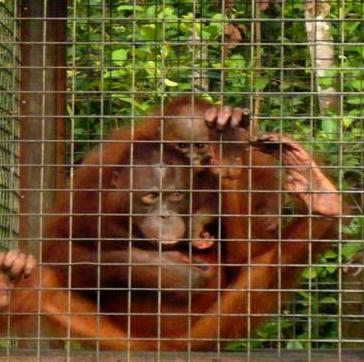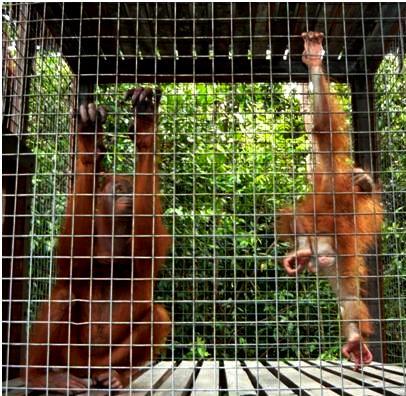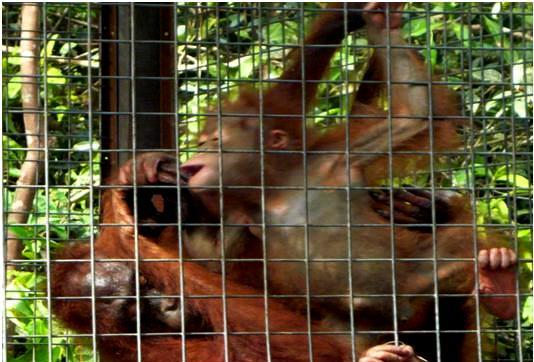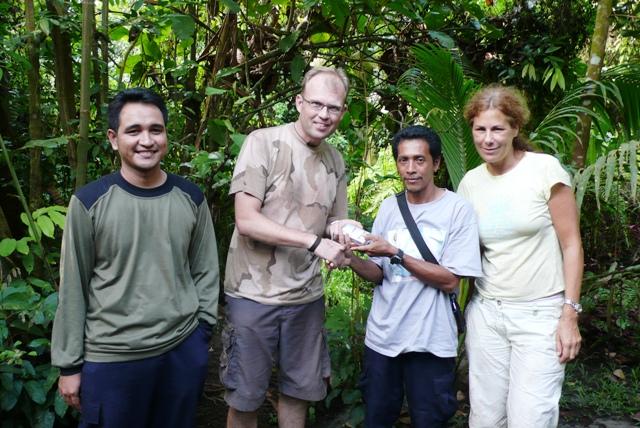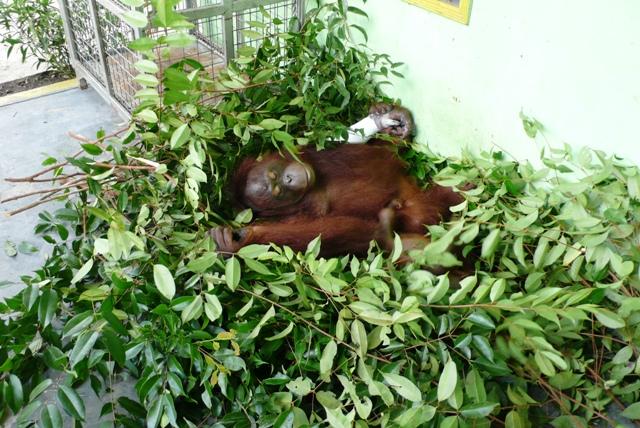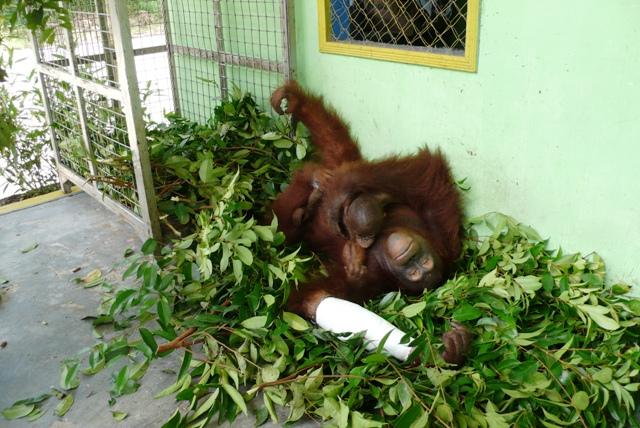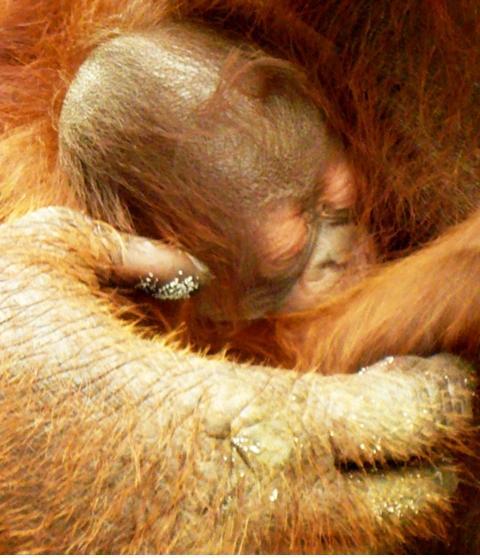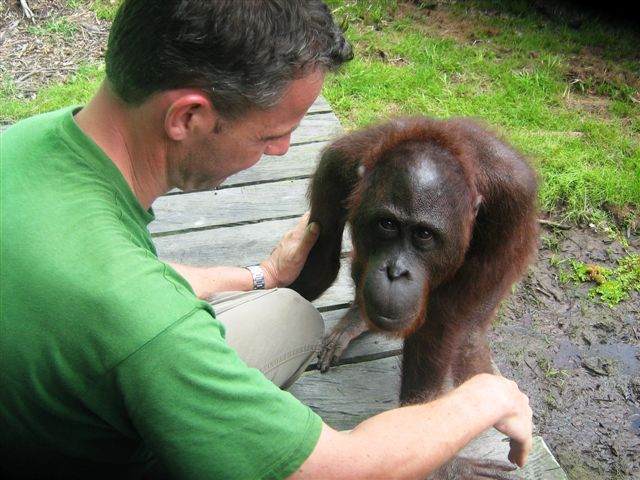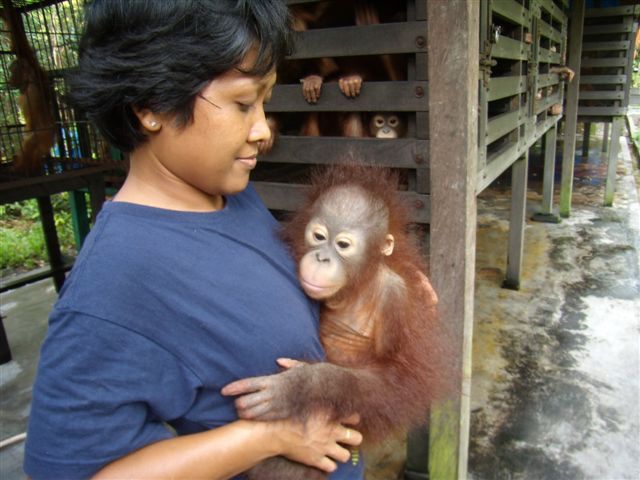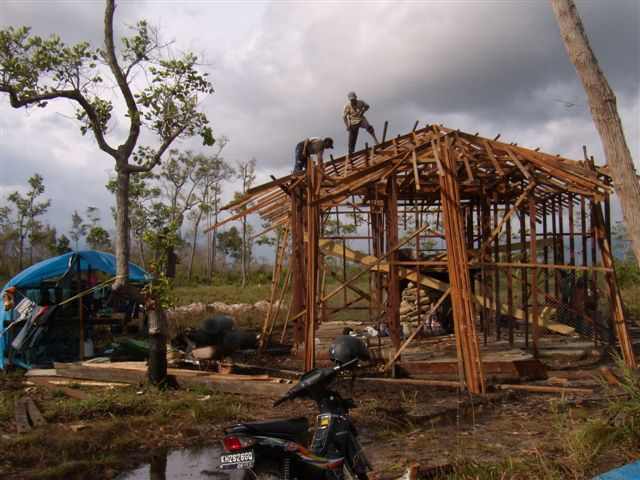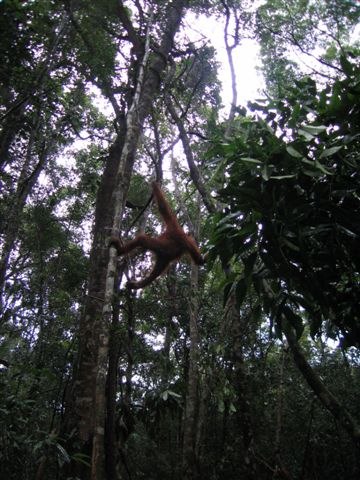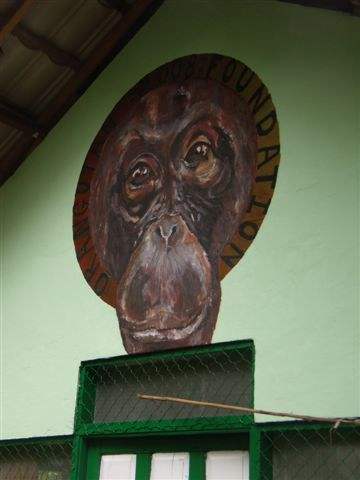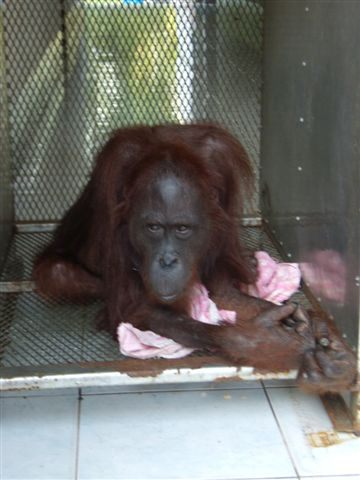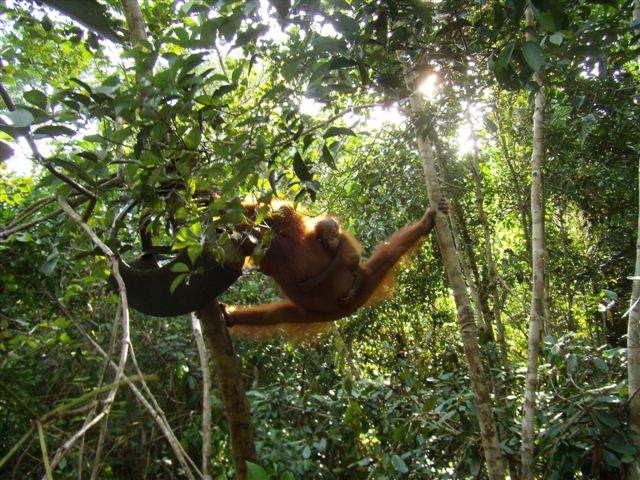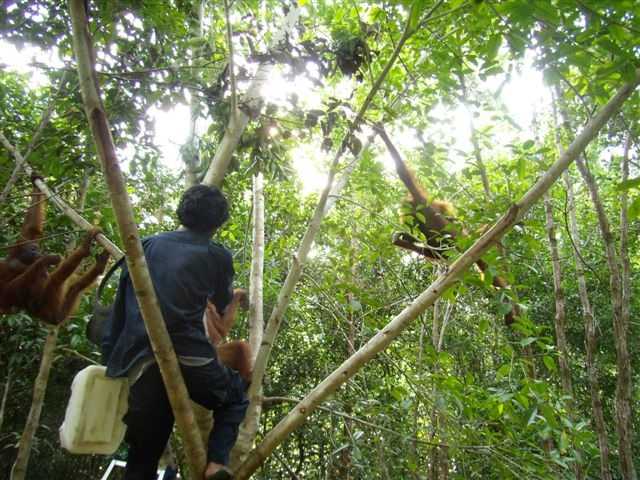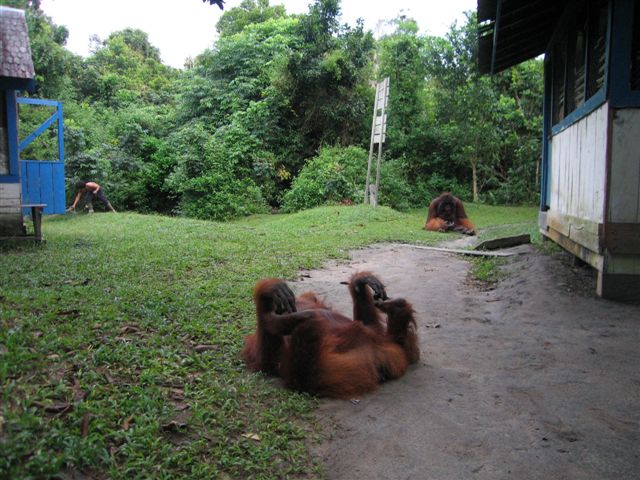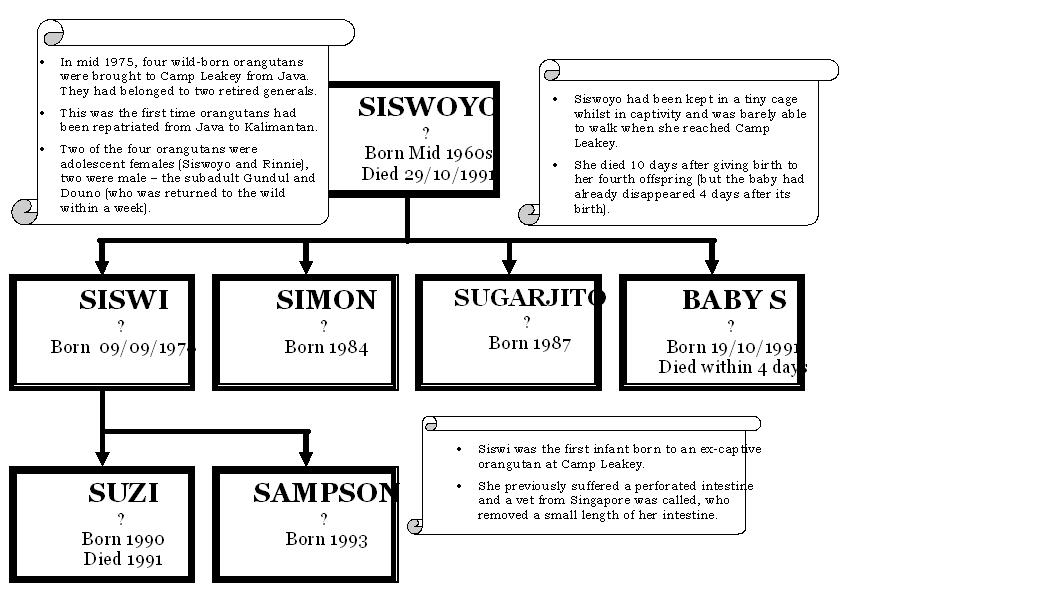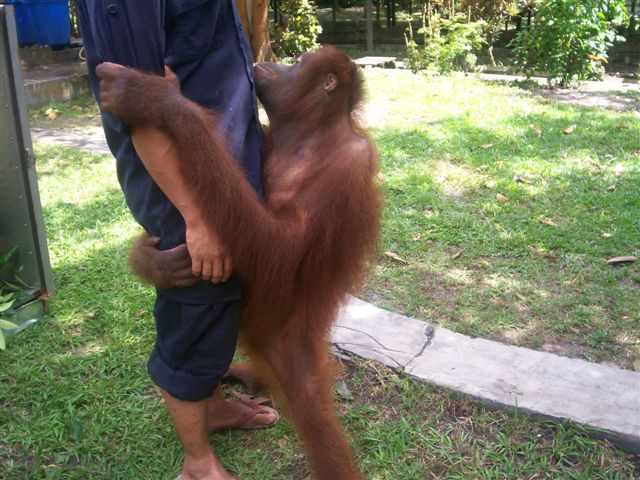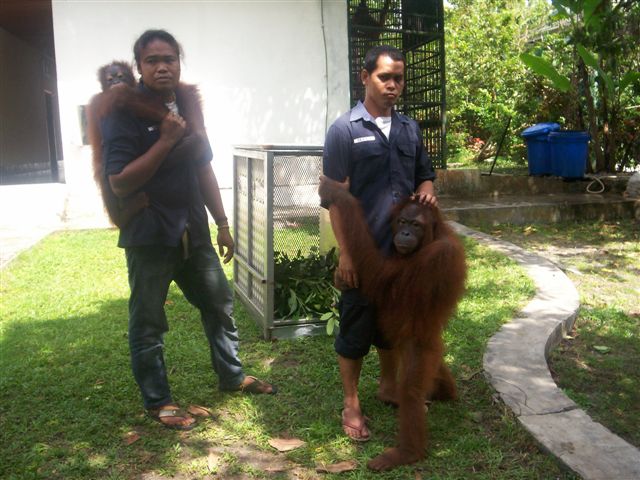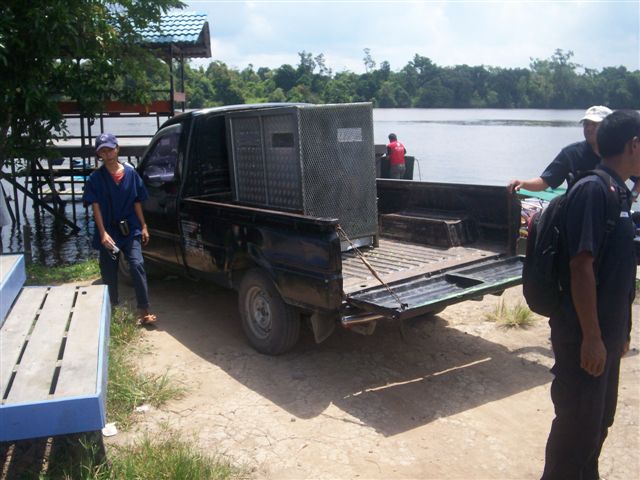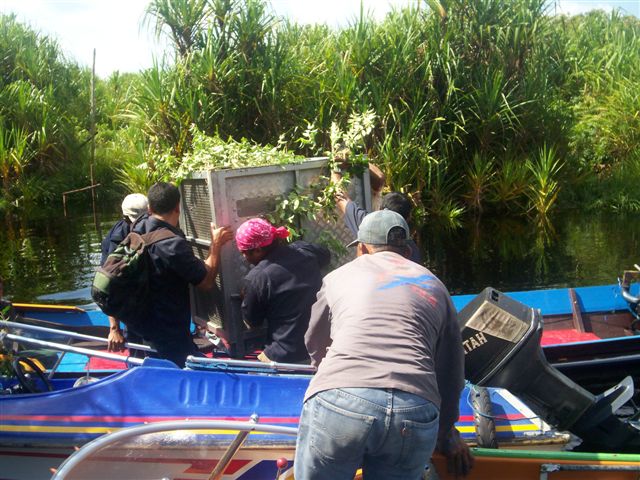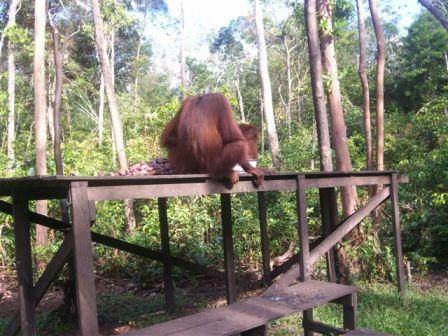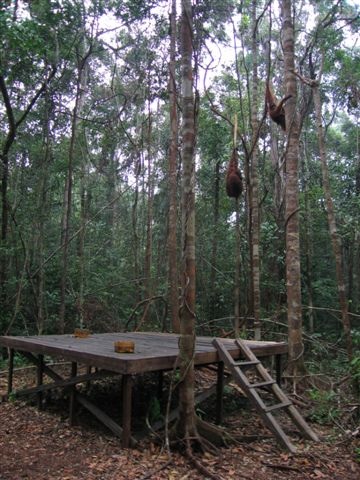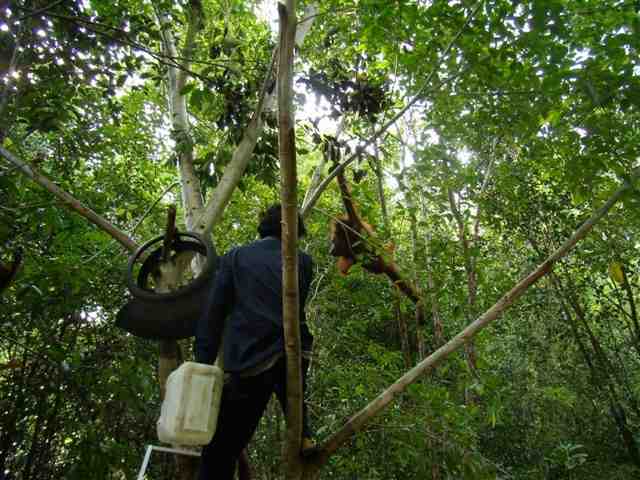Last Sunday the Orangutan Foundation responded to reports of a young female orangutan isolated in a tree in an oil palm plantation.

The young female orangutan climbed the fig tree when we arrived in the oil palm plantation area at Pandu senjaya village, Pangkalan Lada.

Uduk and Yatno climbed the tree, but the orangutan moved to the top of the tree. At 17.30 the orangutan made the third nest and prepared to sleep. It started to get dark, so Uduk climbed down from the tree. We decided to stop the rescue and drove back to Pangkalan Bun. A labourer from the oil palm plantation stayed and watched the orangutan during the night.
The next day at 05.00 Dr Fiqri, the Vet of Orangutan Foundation's Reintroduction Programme arrived and the orangutan was still in the tree. The labourer had started work that made the orangutan scared to come down.
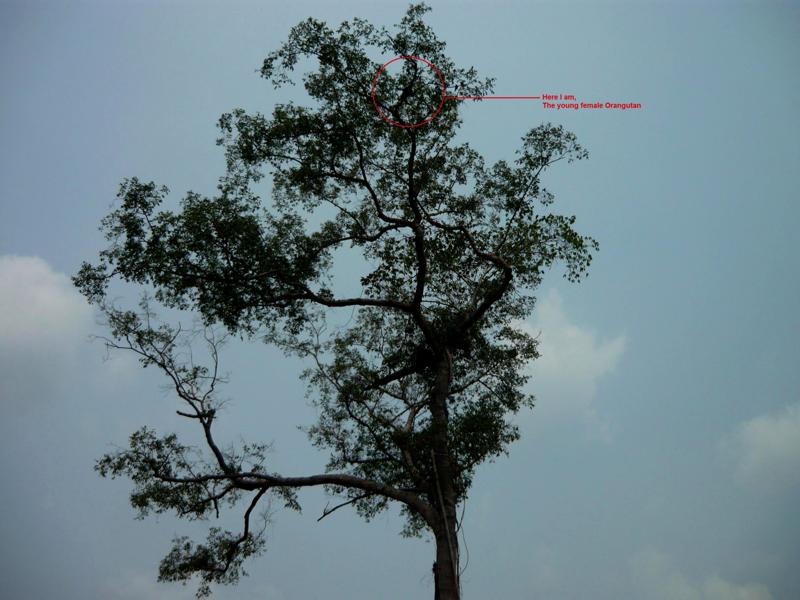
The plantation labourer moved to a different area and the orangutan began to climb down. Dr Fiqri tried to catch her but she was very fast and moved to another tree, climbing right to the top.
The second rescue team arrived at 08.00, started to moved in on the second tree where the orangutan was.

At 10.00 the orangutan climbed down and the rescue team succeeded to catch her with a net.

Dr Fiqri immediately checked the orangutan and he found worms in the orangutan's faeces but on a whole the orangutan was in good condition.
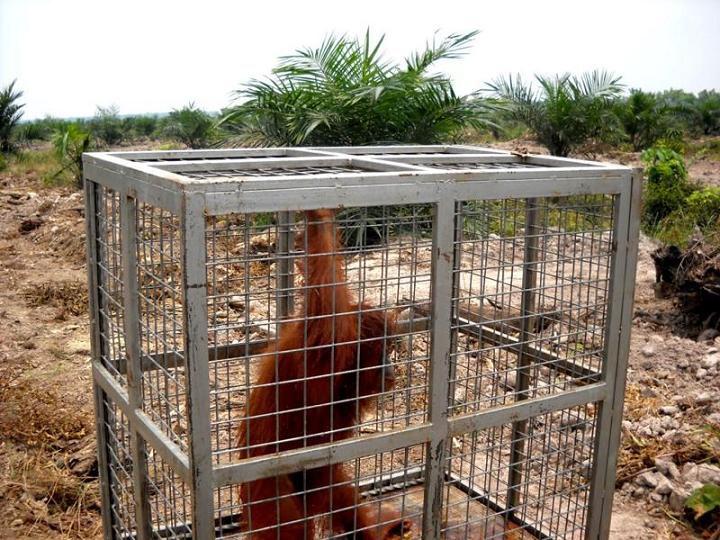
The young female orangutan inside the transportation cage.

We then had to carefully transfer the cage to the truck.

The young female orangutan on the back of the truck with Dr Fiqri always keeping a close eye on the whole translocation process for safe and good handling.

The young female orangutan's view as she leaves the oil palm plantation. She will be freed in the Lamandau River Wildlife Reserve, a safer and healthier habitat, after she has received treatment for the worms in the Orangutan care Center and Quarantine (OCCQ) facility.
Dr Fiqri said approximately 3 or 4 days after treatment the female orangutan is ready to be translocated to the reserve where she will be monitored and protected. Please make a donation today to support our work in the Lamandau reserve - these orangutans deserve a life in the forest and the forests deserve orangutans.
Special thanks go to; Eko Novi, the head of of Section II Nature Resources Conservation Agency of Central Kalimantan; Haryo, who gave the information about the young female orangutan in the oil palm plantation; Sia and Polis (OCCQ Staff) for good collaboration rescue ; Tigor (Orangutan Reintroduction Manager), Uduk (Orangutan Reintroduction Camp Coordinator), Fiqri (Orangutan Reintroduction Vet) and Yatno (Orangutan Reintroduction Driver) for the good work and dedication.
Thank you,
Hudi W Dewe
Orangutan Foundation - Programme Co-ordinator


